Green thumb: landscape architect Enzo Enea on bringing mysticism to Miami’s waterfront

From his first job working on the landscaping of Hawaii’s Sheraton Hotel in the 1990s, Enzo Enea has been refining his craft. So much so that the Swiss-based founder and CEO of Enea Landscape Architecture is, these days, the go-to guy for creating lush green spaces that combine head-turning showmanship with a nuanced eye for balance and intimacy.
These are particularly busy times for Enea’s practice especially in Miami where his name is on the hoardings of a clutch of bold-faced projects including Enrique Norten’s One Ocean, Arquitectonica’s Oceana Bal Harbour, Zaha Hadid’s One Thousand Museum, OMA’s Park Grove and Isay Weinfeld’s Fasano Residences + Hotel Miami Beach.
He recently completed work on the 43-residence condominium Palazzo del Sol, a palatial community on Fisher Island’s last prime waterfront development site, whose 10ft high floor-to-ceiling windows look out over the Atlantic Ocean, South Beach and downtown Miami.
We took the opportunity to pin the landscape architect down to find out more...
Wallpaper*: What was the brief for the Palazzo del Sol, and how did you interpret it?
Enzo Enea: Two years ago, we were approached by Fisher Island Holdings to develop a landscape concept for the outdoor spaces of Palazzo del Sol. The brief was to create a completely new concept of outdoor living, by maximising the use of the exterior areas and making the outdoors an extension of the interior spaces of the Palazzo del Sol building.
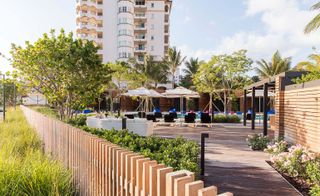
Enea worked with Miami's specific micro-climate in order to create a design that would feel at home in the city
In a tropical climate like Miami’s where temperatures can exceed 40°C, such a requirement requires careful study to create a micro-climate that would allow the families to really enjoy the outdoors. We were inspired by the idea of indoor and outdoor connectivity, but the view of the water was key. It’s why we changed the position of the cabanas to face the water and open up views by strategically placing trees and palms away from those views.
W*: What was the most challenging aspect of the project and how did you resolve it?
EE: The project was already under construction before we were involved, so that made the design process atypical. It was a challenge to catch up. As there was no pause in the construction schedule, we had to provide a concept design that was not only fresh, but feasible in terms of constructibility. We had to work efficiently to build trust and bring value to the project. Happily, the client was very open to the bold moves we proposed.
W*: Which part of the project are you proudest of?
EE: The most notable part of the gardens is the arrival and porte-cochère drop-off, and the pool deck that overlooks the waters of Government Cut and South Point Park. We designed architectural elements draped with flowering vines to make the space more green and fresh. The design weaves the natural paving materials with varying textures and shades of green to make a natural but manicured landscape.
W*: What is your assessment of the state of landscape architecture today?
EE: Landscape architecture is fundamentally about designing our future environment and producing remarkable transformations. It is a combination of science, engineering, biology and art, and it is more complex than most people can think. It is hard to think of another profession that has accomplished so much for society.
W*: What are some pitfalls that young practitioners starting out in the business should be aware of?
EE: It is important to be practical. Pushing the envelope in design is a given; however, it is important not to lose sight of the goal of the projects, and to respect the client’s budget.
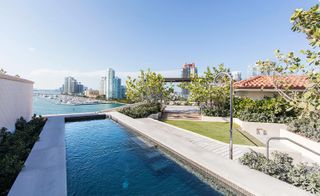
Water views were key, so the architect worked towards opening up views to the sea
W*: What, in your view, are some common mistakes made by landscape architects?
EE: Not integrating the landscape design with the building architecture and the place. The landscape architect must be aware of the surroundings, the climate, the plant-hardiness zones, the style of the architecture. It’s not about decorating, but integrating.
W*: Who do you think is doing great work in your field these days?
EE: An important scope of landscape architecture is to generate value to a place. A good example is the High Line in New York. By activating this space, every developer building around Manhattan’s West Side has profited. London’s Hyde Park is another example for how important landscape is in a city.
W*: Who has influenced or inspired you?
EE: My personal design philosophy has its roots in my childhood in Italy. The summers I spent on my grandfather’s farm rooted in me the mystical properties of nature. He was part of a long line of Italian stonemasons, and my father carried on this tradition with a stone and terracotta garden decoration business. As a child, I helped my grandfather with his fountain building and, in the process, came to appreciate the importance of stone and water in the garden as calming, therapeutic elements. In 1990, I went into the business of landscape design, when I joined my father. That early exposure to the hands-on, construction aspect of the garden trade, as well its financial facets, influenced how my company was developed, and how it runs today.
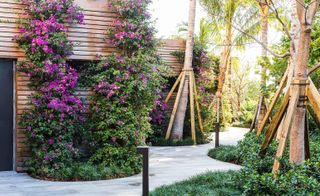
For Palazzo del Sol, Enea aimed to make the external areas an extension of the interior spaces

The design weaves the natural with the man-made, integrating landscape and architecture
INFORMATION
For more information visit Enzo Enea's website
Wallpaper* Newsletter
Receive our daily digest of inspiration, escapism and design stories from around the world direct to your inbox
Daven Wu is the Singapore Editor at Wallpaper*. A former corporate lawyer, he has been covering Singapore and the neighbouring South-East Asian region since 1999, writing extensively about architecture, design, and travel for both the magazine and website. He is also the City Editor for the Phaidon Wallpaper* City Guide to Singapore.
-
 Shigeru Ban’s mini Paper Log House welcomed at The Glass House
Shigeru Ban’s mini Paper Log House welcomed at The Glass House'Shigeru Ban: The Paper Log House' is shown at The Glass House in New Canaan, USA as the house museum of American architect Philip Johnson plays host to the Japanese architect’s model temporary home concept
By Adrian Madlener Published
-
 Artist Mickalene Thomas wrestles with notions of Black beauty, female empowerment and love
Artist Mickalene Thomas wrestles with notions of Black beauty, female empowerment and love'Mickalene Thomas: All About Love’, a touring exhibition, considers Black female representation
By Hannah Silver Published
-
 New Phaidon book celebrates the world's best designers
New Phaidon book celebrates the world's best designersDesigned for Life: The World’s Best Product Designers by Phaidon celebrates the rich contemporary landscape of product design
By Tianna Williams Published
-
 Shigeru Ban’s mini Paper Log House welcomed at The Glass House
Shigeru Ban’s mini Paper Log House welcomed at The Glass House'Shigeru Ban: The Paper Log House' is shown at The Glass House in New Canaan, USA as the house museum of American architect Philip Johnson plays host to the Japanese architect’s model temporary home concept
By Adrian Madlener Published
-
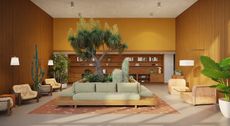 Ray Phoenix to rise in Arizona
Ray Phoenix to rise in ArizonaRay Phoenix housing project launches, designed by Johnston Marklee, who worked with Lamar Johnson Collaborative, for property experts Ray and Vela
By Ellie Stathaki Published
-
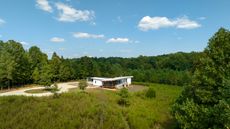 A low-energy farmhouse provides a rural escape in North Carolina
A low-energy farmhouse provides a rural escape in North CarolinaThis low-energy farmhouse is a net zero architectural re-set for a Californian client, an East Coast relocation for a more engaged and low-key lifestyle
By Jonathan Bell Published
-
 A Petra Island house rises from Frank Lloyd Wright's original drawings
A Petra Island house rises from Frank Lloyd Wright's original drawingsBased on Frank Lloyd Wright drawings, the cantilevering Petra Island Massaro House, located in New York’s Hudson Valley, is now open to visitors
By Craig Kellogg Published
-
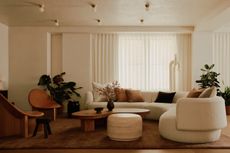 An Upper West Side apartment by General Assembly nods to its history
An Upper West Side apartment by General Assembly nods to its historyAn Upper West Side apartment in New York, born out of the reimagining of two neighbouring units, is refreshed by General Assembly for a young family
By Ellie Stathaki Published
-
 New York's Leica store echoes the brand's blend of heritage and innovation
New York's Leica store echoes the brand's blend of heritage and innovationLeica store throws open its doors in New York's Meatpacking District, courtesy of Brooklyn based Format Architecture Office
By Adrian Madlener Published
-
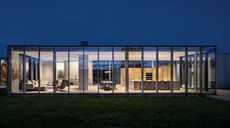 Hudson Valley Residence is a low-lying retreat that seamlessly blends into the horizon
Hudson Valley Residence is a low-lying retreat that seamlessly blends into the horizonDesigned by HGX Design, Hudson Valley Residence is a scenic home offering unobstructed views across the Catskill Mountains in Upstate New York
By Tianna Williams Published
-
 Architectural gardens around the world to soothe the soul
Architectural gardens around the world to soothe the soulFrom small domestic gardens, to nature reserves, urban interventions and local parks, here are some of the finest green projects that place nature at their heart
By Ellie Stathaki Published